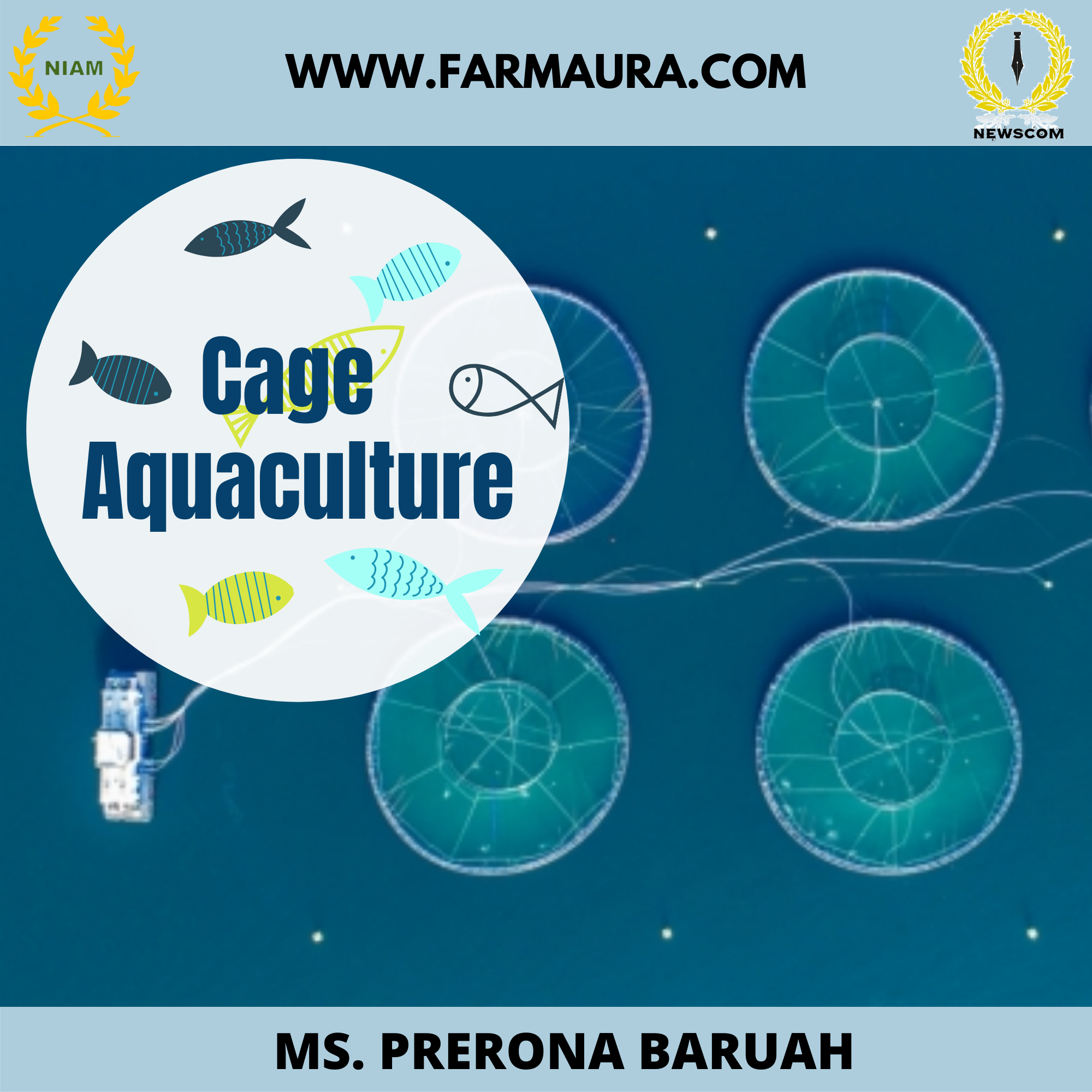
“To ensure a food-secure future for all, the fisheries and aquaculture sector is key.” – (SOFIA, FAO)
Fisheries and aquaculture play a crucial role in boosting food production, nutritional security, and employment. It helps provide a livelihood for more than 28 million fishers and fish farmers, contributing 1.24% to India’s GVA and over 7.28% to the agricultural GVA. Moreover, the export earnings from this sector have been Rs.46,662.85 crores during 2019-20, which makes this sector very remunerative for farmers.
The govt. has come up with various initiatives to boost this sector. The most recent one was a webinar on “Cage aquaculture in Reservoir: Sleeping Giants” as a part of “Azadi Ka Amrit Mahotsav” organised by the Ministry of Fisheries, Animal Husbandry and Dairying. Moreover, the Department of Fisheries, through its flagship scheme, the Pradhan Mantri Matsya Sampada Yojana (PMMSY) has set investment goals to promote cage aquaculture.
What is cage aquaculture?
Cage aquaculture is the culturing of fishes enclosed in a net cage which allows free flow of water in existing water resources. It consists of a floating frame, net material, and mooring system (rope, buoy, anchor, etc.), which includes a round or square-shaped floating net to hold and culture a multitude of fishes. This system can be installed in reservoirs, rivers, lakes, or the sea. There are four types of cages, namely fixed, floating, submerged, and submersible cages. The recommended size of a cage is 6m x 4m x 4m, and cage frames are made from mild steel (MS), galvanized iron (GI), polyvinyl chloride (PVC), and virgin-grade HDPE (High-Density Polyethylene) are preferred. The cages need to be installed in a caterpillar design for a better flow of water, thereby facilitating relatively high dissolved oxygen. The exotic species, Pangasius (Sutchi Catfish), Pangasianodon hypophthalmus, is the most suitable species for cage aquaculture due to its rapid growth rate and tolerance to the environment with little dissolved oxygen.
The rationale behind cage aquaculture comes from the fact that India has 3.15 million ha of reservoirs and more than 5.0 lakh ha of floodplain wetlands (beels, jheels, mauns, pats, etc.) spread across several river basins in the country. The fish yield from reservoirs, for the time being, is about 82 kg/ha, which is low despite their high production potential. So, to meet the increase in demand, it is essential to explore alternate production methods to augment fish yield. Moreover, the significance of cage aquaculture is that it is a low investment, high return farming practice with low carbon emission activity. It surpasses traditional fish farming with a yield of 25-30 kg per cubic meter, compared to only 0.5-1 kg per cubic meter in ponds.
With the UN declaring 2022 as the “International Year of Artisanal Fisheries & Aquaculture”, it is prudent to pace towards an economically, socially, ecologically, and environmentally sound farming practice i.e., cage aquaculture.




